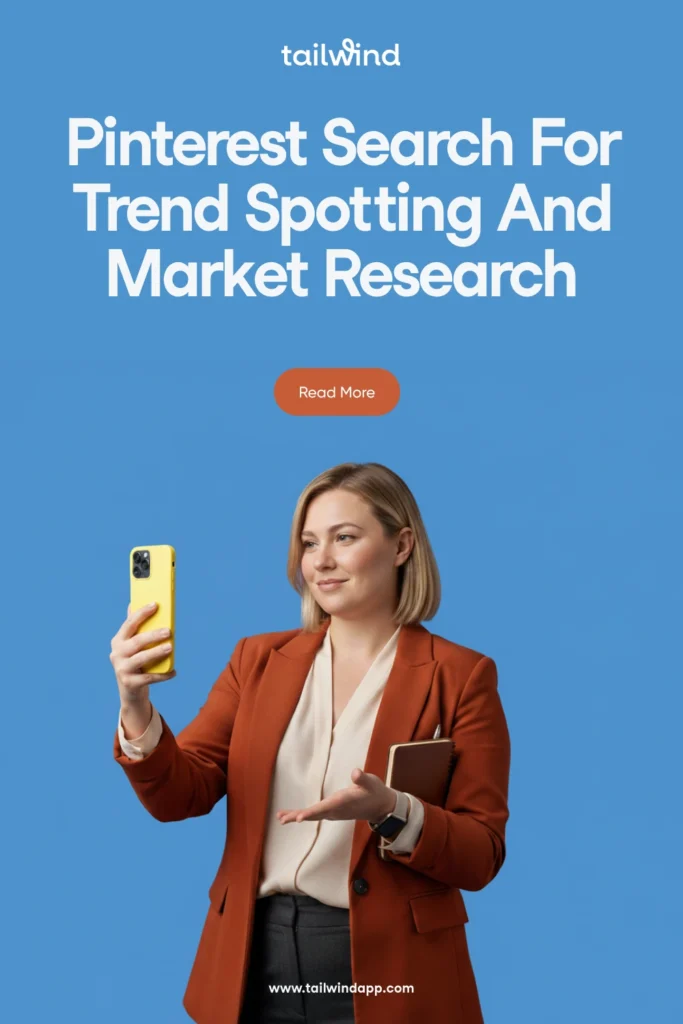
When people think of Pinterest, they often picture recipes, DIY projects, and fashion inspiration. But behind the aesthetic boards and pins lies one of the most powerful tools for trend spotting and market research. With over 400 million monthly active users searching daily, Pinterest is a goldmine of consumer insights waiting to be tapped.
If you’re a business owner, marketer, or researcher, learning how to use Pinterest search strategically can help you identify rising trends before they go mainstream, understand your audience better, and refine your product or content strategy.
Why Pinterest is a Trend Forecasting Powerhouse
Pinterest is not just another social media platform—it’s a discovery engine. Unlike Instagram or TikTok, where users scroll through feeds, Pinterest is driven by intent. Users actively search for ideas, products, and inspiration they plan to act on.
That intent makes Pinterest data highly predictive. In fact, Pinterest’s own annual Pinterest Predicts report has correctly forecasted more than 80% of future trends over the past few years. By watching what people search, save, and share, you can get a real-time look at emerging interests and consumer behavior.
How Pinterest Search Works
To spot trends well, it’s important to understand how Pinterest search functions.
- Search bar: Shows auto-suggested queries as you type. These are based on real user searches, making them a great indicator of demand.
- Search filters: Results can be narrowed down by “Pins,” “Boards,” “Profiles,” or “Shopping.” Each filter offers a different perspective on what’s popular.
- Related searches: Pinterest displays suggested keywords at the bottom of search results to help you expand your research.
- Personalization: Results are tailored to users’ activity, but the overall trends reflect collective interest.
This combination makes Pinterest search a highly reliable tool for market analysis.
Step 1: Use Pinterest Search for Keyword Discovery
The simplest way to begin trend spotting is to type a keyword into Pinterest search. The auto-suggestions that appear are not random—they’re based on what millions of users are actively looking for.
For example, typing “wedding” might reveal terms like “micro wedding,” “destination wedding ideas,” or “eco-friendly wedding décor.” These aren’t just popular keywords—they’re signals of emerging trends in the wedding industry.
Pro tip: Save these keyword suggestions in a spreadsheet to track changes over time.
Step 2: Analyze Top Pins and Boards
Once you enter a search, study the top-ranking pins and boards. These represent what Pinterest’s algorithm currently considers most relevant and engaging. Pay attention to:
- Visual themes (colors, styles, photography)
- Common keywords in titles and descriptions
- Engagement signals like saves and comments
- Brands or creators dominating the space
This analysis helps you identify what’s resonating with audiences and what competitors are doing effectively.
Step 3: Leverage Seasonal Trends
Pinterest is highly seasonal. Searches spike for holidays, events, and seasonal needs months in advance. For instance:
- Halloween searches start in August.
- Holiday décor searches spike in September–October.
- Summer travel ideas trend in spring.
If you’re in retail, fashion, travel, or food, tracking these seasonal cycles can help you prepare campaigns ahead of time. By monitoring search volume shifts, you can forecast demand earlier than competitors.
Step 4: Identify Cross-Category Trends
Some of the most valuable insights come from observing how trends overlap across categories. For example:
- “Sustainable” might appear in fashion, home décor, and food searches.
- “AI” could trend in education, business tools, and art.
- “Minimalist” may pop up in everything from living room design to skincare routines.
These overlaps reveal bigger cultural movements you can incorporate into your business or marketing.
Step 5: Track Emerging Micro-Trends
Pinterest search doesn’t just highlight massive global trends—it’s also great for finding niche opportunities. Micro-trends often start small on Pinterest before expanding into mainstream markets.
Look for search terms that have fewer but highly engaged results. For example, “coastal grandmother fashion” started as a niche but quickly gained traction. By spotting these early, you can position yourself as a leader in an untapped space.
Step 6: Use Pinterest Predicts for Validation
Pinterest publishes its Pinterest Predicts report annually, highlighting categories and topics expected to grow in the coming year. Combine this resource with your own search research for validation. If you notice increasing searches for “retro kitchen design” and Pinterest Predicts also highlights it, you know it’s worth investing in.
Step 7: Apply Insights to Your Strategy
Once you’ve identified trends, the key is applying them. Here are ways businesses can act on Pinterest insights:
- Product development: Create or adjust offerings based on rising consumer interests.
- Content marketing: Develop blog posts, videos, and pins that target trending keywords.
- Advertising: Launch Pinterest ad campaigns around trending terms for better reach.
- Brand positioning: Align your brand with cultural shifts like sustainability or inclusivity.
Benefits of Using Pinterest for Market Research
- Early access to trends: Get ahead of competitors by spotting demand before it peaks.
- Visual insight: Unlike surveys or text-heavy reports, Pinterest gives you a clear look at how trends appear visually.
- Low-cost research: All you need is time and a free Pinterest account.
- Audience understanding: See not just what people are searching for, but how they imagine it.
Final Thoughts
Pinterest search is more than a way to collect inspiration—it’s a forward-looking tool for understanding consumer behavior. By studying search suggestions, top pins, and seasonal patterns, you can uncover trends before they hit the mainstream.
For marketers and business owners, leveraging Pinterest for trend spotting and market research is like having a crystal ball. With consistent research, you’ll not only stay ahead of competitors but also connect with your audience in ways that feel timely and relevant.
FAQs About Pinterest Search for Market Research
How accurate is Pinterest for predicting trends?
Pinterest has a strong track record—its Pinterest Predicts report has correctly forecasted over 80% of trends in recent years.
Can small businesses use Pinterest for market research?
Yes. Pinterest search is free and provides valuable insights into consumer interests, making it accessible to businesses of all sizes.
How often should I research trends on Pinterest?
Monthly check-ins are ideal, but during peak seasons (holidays, back-to-school, summer), weekly searches can help you catch fast-moving trends.
Do Pinterest trends apply globally?
Not always. Some trends are region-specific. Pay attention to whether a trend reflects your target market before applying it.
How can I use Pinterest insights for product development?
If you notice increasing searches around a theme (e.g., “eco-friendly kitchen storage”), consider launching or promoting products that meet that demand.

The post Pinterest Search for Trend Spotting and Market Research appeared first on Tailwind Blog.














